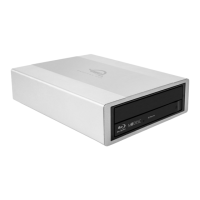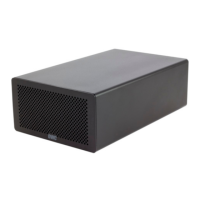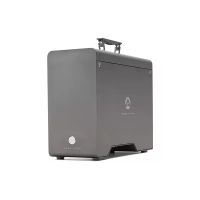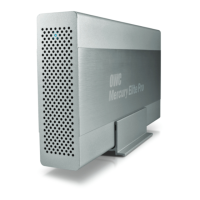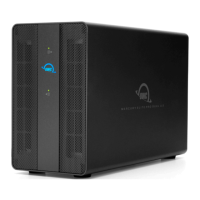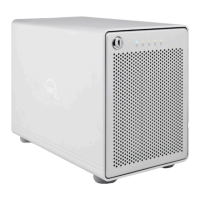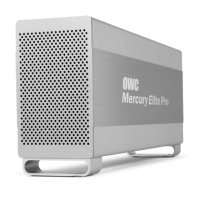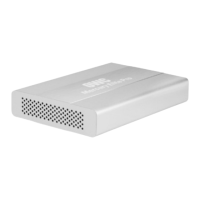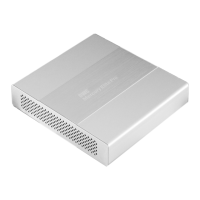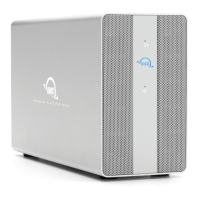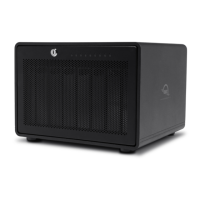OWC MerCury raCk PrO IntrOduCtIOn
RAID 1 “Drive Mirroring” Mode (2 Drives Installed)
Switch setting: UP-UP-DOWN
The drives show up as one volume with a size equal to the capacity of one of the two
drives used in the array. RAID 1 copies (or “mirrors”) a set of data from the first drive to the
second drive. This is useful when reliability and backup are more important than capac-
ity. When one drive fails, it can be replaced and the data will be rebuilt automatically.
RAID 10 “Drive Mirroring with Striping” Mode (4 Drives Installed)
Switch setting: UP-UP-DOWN
The drives show up as one volume with a size equal to the combined capacities of half
of the drives used in the array. RAID 10 creates an exact copy (or “mirror”) of a set of data
but also uses a RAID 0 “stripe” for speed. When one drive fails, it can be replaced and the
data will be rebuilt automatically.
RAID 3 “Drive Striping with Dedicated Parity” Mode
Switch setting: UP-DOWN-DOWN
The drives show up as one volume with a size equal to the combined capacities of all
the drives in the array, minus one drive. RAID 3 uses byte-level striping, with parity infor-
mation located on 1 dedicated parity drive. Very fast performance can be achieved with
RAID 3 while also maintaining fault protection, so if one drive fails, it can be replaced and
the data will be rebuilt automatically.
RAID 5 “Drive Striping with Distributed Parity” Mode
Switch setting: DOWN-UP-DOWN
The drives show up as one volume with a size equal to the combined capacities of all
the drives in the array, minus one drive. RAID 5 uses block-level striping with parity data
distributed across all disks and therefore provides the perfect balance between high
performance and data integrity. When one drive fails, it can be replaced and the data
will be rebuilt automatically.
Storage Capacity
Data Safety
Performance
Storage Capacity
Data Safety
Performance
Storage Capacity
Data Safety
Performance
Storage Capacity
Data Safety
Performance
5
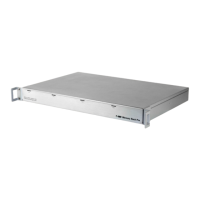
